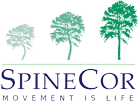A revolutionary treatment
The SpineCor® brace has started a small revolution in the field of corrective braces for spinal deformities. And every day our researchers are uncovering new clinical applications for it.
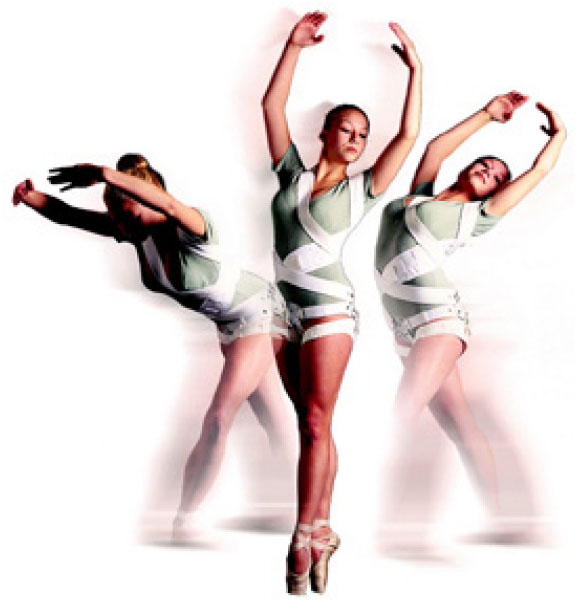 |
For a long time now, medical researchers have sought to develop a device that reinforces spine-supporting structures and that offers greater flexibility than a rigid brace to patients suffering from spinal deformities.
Rigid braces often slightly reduce the scoliotic curvature, but the reduction disappears as soon as the patient stops wearing the brace. Rigid bracing also causes muscle atrophy. This called for a revolution!
|
An effective, flexible brace
|
SpineCor® is a flexible, dynamic brace developed by a research team at the Sainte-Justine Hospital and the Université de Montréal in the early 90s to treat adolescent idiopathic scoliosis. The SpineCor® brace consists in a pelvic base which acts as an anchoring point for a series of elastic bands that are applied to the patient's trunk according to the SpineCor® protocol and the type of scoliosis. The therapeutic approach is based on training the wearer by repetition of a curve-specific Corrective Movement®. This Corrective Movement® is continuously repeated due to the resistance of the elastic bands as patients go about the normal activities of daily living. Over time the dynamic action of the corrective bands on the neuromuscular system lead to posture integration and result in permanent stabilisation, even after bracing is discontinued. Quite unlike a rigid brace which impedes movement and inhibits the neuromuscular system. Not to mention that the treatment results of rigid braces often do not last after bracing is discontinued! |
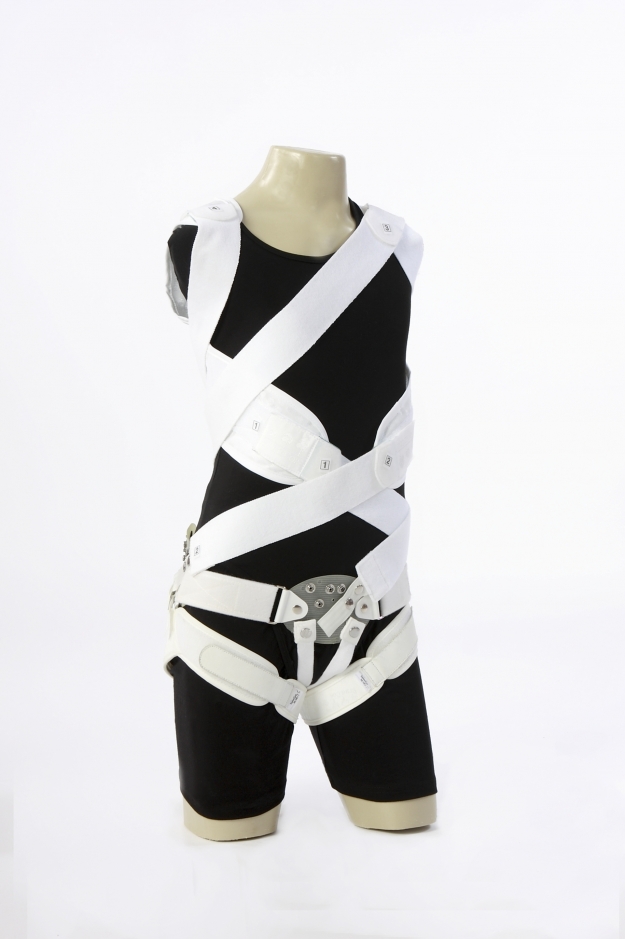 |
Here is a report by NBC on the SpineCor brace :
Finally, here's an explanatory video on the way the SpineCor brace works and how it is adjusted for each patient :
Advantages of the SpineCor® dynamic brace
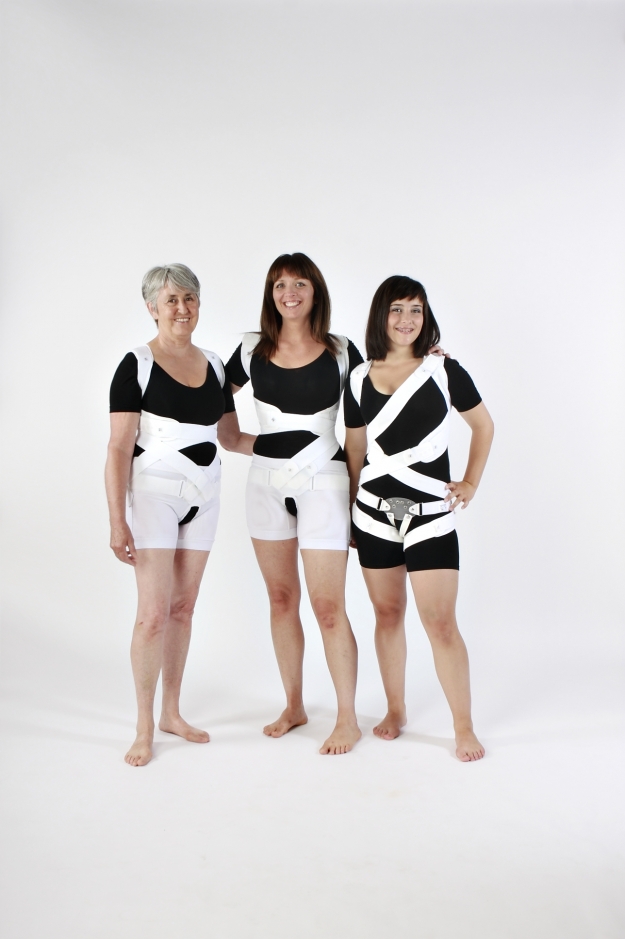 |
|
Results
Complete or near-complete correction of curves with a Cobb angle of less than 30° is possible if the SpineCor® treatment commences before the adolescent growth spurt.
In the case of treatment commenced during or after the adolescent growth spurt or of curves with a Cobb angle of over 30°, results range from curve stabilization to significant correction (more than 6°). Results also show that patients who wear the SpineCor® brace as prescribed are 3 times less at risk of undergoing surgical fusion (3, 40).
A study conducted in 2003 by The SpineCorporation demonstrated that the SpineCor® brace corrects or stabilizes adolescent idiopathic scoliosis in 89% of cases. In 2006, the Scoliosis Research Society (SRS) published its standardized idiopathic scoliosis research criteria, restricting study to high-risk cases only (Cobb angle 25°–40°, Risser sign 0–3). Following these modifications, new results published in 2007 put the therapeutic success* of SpineCor® at 59% (3), ), which is far superior to that of rigid braces, evaluated at between 15 and 31% (40).
 |
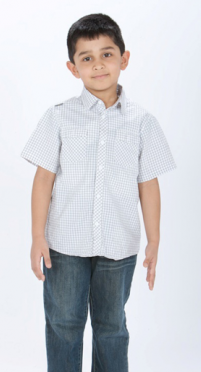 |
*Therapeutic success is defined by the SRS as improvement (reduction of 6° or more of the initial Cobb angle) and/or stabilization (Cobb angle increase of less than 5°)
Other uses for the SpineCor® brace
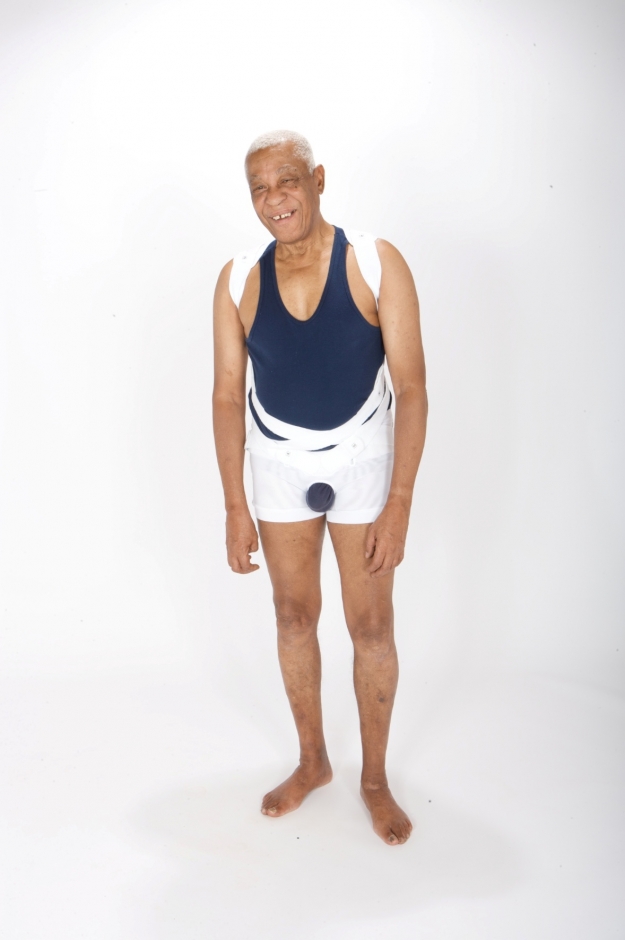 |
Although the SpineCor® brace was originally developed to treat adolescent idiopathic scoliosis (AIS), subsequent clinical trials have successfully also allowed us to apply the dynamic brace to the treatment of hyperkyphosis(restructuring) and spondylolisthesis (stabilization). The SpineCor® brace can also be used to treat spinal deformities in adults (scoliosis, hyperkyphosis, spondylolisthesis). See SPINECOR - FAQ ADULTS. It can improve postural alignment, prevent curve progression due to ageing, as well as significantly reduce pain. It has proven to be an unparalleled solution for treating these medical conditions. Because the corrective bands can be arranged in countless different ways, the SpineCor® dynamic brace has extraordinary potential for development. Future research will no doubt uncover numerous other clinical applications. |
